Whether you’re ready to get started or would like to know more, we’re here to help.
By Scott Newman, carsales.com.au
The general rule of thumb with electric cars is you can have power and performance or long-distance driving range, but both are mutually exclusive. As battery technology and the development of electric motors continues to advance at a rapid rate, there are now a few rule-breaking EVs that promise both, including the Polestar 2 Long Range Dual Motor.
If you haven’t heard of the Polestar brand yet, it is the dedicated electric car offshoot of iconic Swedish car maker, Volvo, and the 2 – a conventional four door sedan - is the first in a range of zero emission machines to arrive in Australia.
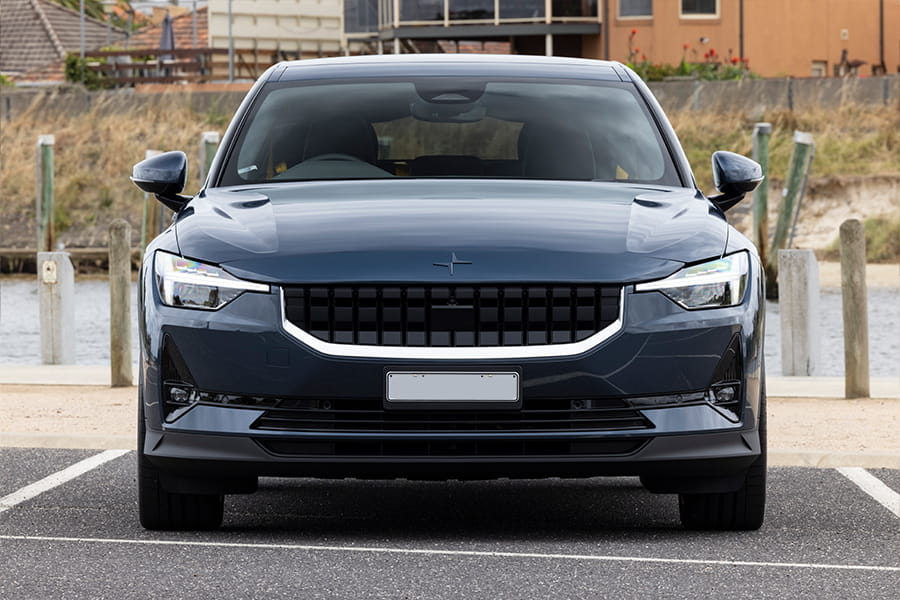
It is available in three model configurations that are clearly designated by their official titles: starting with the Standard Range Single Motor, the mid-spec Long Range Single Motor and the flagship Long Range Dual Motor we’re testing here.
Prices start at a competitive $63,900 plus on-road costs for the entry level Polestar 2, with the Long Range costing from $68,400 (plus ORCs) and the Dual Motor commanding an additional $5000 premium.
We’ve driven the single-motor version and were impressed, so how does the Polestar 2 Long Range Dual Motor, with its potent all-wheel drive powertrain, stack up in Australia’s burgeoning electric car market? Let’s find out.
Not all as it seems
While the 2022 Polestar 2 Long Range Dual Motor sits atop the range that’s not quite the full story.
The Polestar 2 comes equipped with a decent array of standard equipment, including dual-zone climate control, eco-friendly cloth interior trim, a 12.3-inch digital instrument cluster and an eight-speaker audio system controlled from an 11-inch central colour touchscreen that is the first to utilise a fully integrated Android Auto operating system.
It also comes with autonomous emergency braking, cruise control, lane keeping assistance and seven airbags, including a centre mounted unit that reduces head injuries between occupants in a side impact collision.
However, a key part of Polestar’s pricing strategy to keep the initial cost as low as possible and undercut rivals such as the hugely popular Tesla Model 3, Hyundai Ioniq 5 and Kia EV6, the 2 is available with three option packs.

The $3400 Pilot Pack includes additional advanced driver assistance features such as adaptive cruise control, a 360-degree camera, blind spot assist, cross traffic alert, rear collision warning and LED front lighting.
While Polestar’s desire to keep its EV as affordable as possible is admirable, there’s a strong argument to be made that this critical safety equipment should be made standard.
The $6000 Plus Pack sounds like something you might order at the local fish ’n’ chippery, but it adds plenty of niceties like a full-length panoramic glass roof, a heat pump to reduce energy consumption, and a high quality 13-speaker Harman Kardon stereo.
There’s also WeaveTech vegan upholstery that’s lighter than leather and made primarily from recycled materials, plus fully electric front seats, Black Ash wood interior trim and heating for the rear seats, steering wheel and wiper nozzles for those icy Nordic mornings.
Finally, the $8000 Performance Pack is available only on the Dual Motor 2 and features 20-inch forged wheels, manually adjustable Ohlins suspension dampers, Brembo brake callipers with drilled 375mm front discs and gold details for the callipers, valve caps and seat belts.
Our test car had the works for a grand total of $90,200 plus ORCs – a somewhat steeper ask than the standard $73,200.
That elevates it above the Kia EV6 GT-Line (from $82,990) and Tesla Model 3 Performance (from $84,900), for example, but places the top-shelf Polestar 2 below the forthcoming BMW i4 eDrive40 (from $99,990).
Sales are exclusively online, though Polestar intends to have retail experience spaces in major cities shortly.
Stylish performance
Plenty of people will buy, or at least consider, the 2022 Polestar 2 Long Range Dual Motor purely on the strength of its styling. It’s a great-looking thing, though one that defies categorisation.
There are elements of sedan and hatch and SUV without it really being any of the three, hence the application of the generic crossover term.
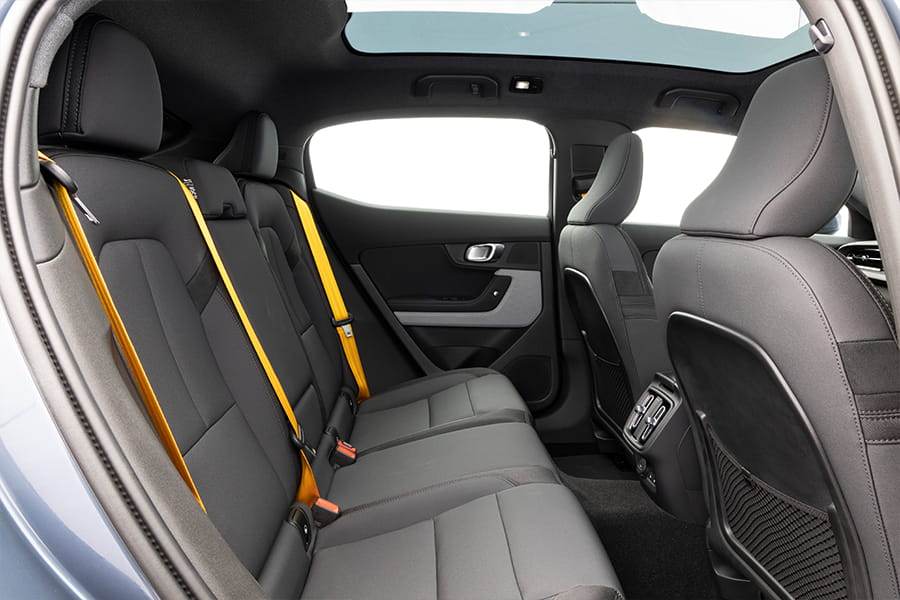
The interior continues to impress. Those who love glitz and glamour might not agree, but the Polestar’s neat, minimalist design is enhanced by the unusual material choices – wood in place of plastic, and fabric in place of leather. I like it a lot.
One downside of the interior is that because the Polestar 2 doesn’t sit on a bespoke EV platform it’s unable to take advantage of the packaging flexibility battery power affords.
For example, there is a traditional centre console that covers a transmission tunnel, rather than having spare room and large storage spaces like in a Tesla or the Kia EV6 and Hyundai Ioniq 5, which won the 2021 carsales Car of the Year.
Polestar has followed the trend of cramming every possible feature into the central infotainment screen to minimise button count and while, as usual, it’s a step too far in terms of ultimate useability, the speed and layout of the Polestar’s Android-based unit makes it much less of an issue than with some other manufacturers.
Operating much like a Google phone, switching between the various car, climate control and media functions is quick and easy and having high-resolution Google Maps handle the navigation is a real benefit.
This is especially the case as a simple scan of a QR code links the car to your Google account, loading in saved addresses, contacts and more. Combine this with the ability to download apps directly from Google Play onto the vehicle and conventional smartphone mirroring starts to feel a little old hat.
On that front, though, while Apple CarPlay wasn’t available in our particular vehicle at the time of testing, an over-the-air update has added the function to all existing and future customer cars. Wireless charging is standard, along with a pair of USB-C ports.
With the optional Pilot Pack installed, the Polestar’s safety offering is up to date and isn’t as intrusive in day-to-day driving as some others. The only thing worth mentioning is the strange fish-eye lens of the rear-view camera which distorts the image slightly.
Accommodation in the back seats is reasonable, though the optional glass roof limits headroom for those over 180cm tall and the seat itself is quite firm. The door bins are also quite small, but there is a pair of cup holders in the fold-down centre arm rest, another two USB-C ports, air vents and controls for the heated seats.
ISOFIX points are provided on the outer two seats with three top tethers, and there’s a ski port for access to the boot. Cargo space is a reasonable 360L, or 1095L with the rear seats folded, and when you lift the boot floor there’s another 41 litres of cargo room in addition 35L under the bonnet.
Whispering crackerjack
Where the 2022 Polestar 2 Long Range Dual Motor differs from its cheaper siblings is, as the name suggests, it has an electric motor on both the front and rear axles.
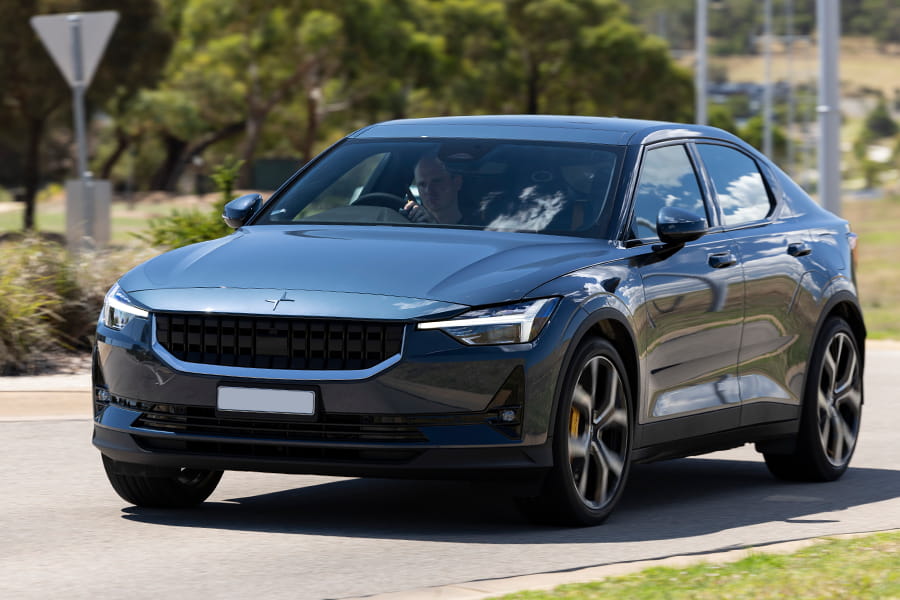
Together, they produced a combined V8-like output of 300kW and 660Nm, resulting in a claimed 0-100km/h sprint of 4.7sec, at the time of our test. But an over-the-air performance upgrade has since increased outputs to 350kW and 680Nm and lowered the sprint to triple figures to just 4.4sec.
A 78kWh lithium-ion battery provides a claimed 480km of range – obviously heavily depending on your driving style – and charging times are quoted as 24 hours from 0-100 per cent when using a 2.3kW household power outlet, eight hours from 0-100 per cent on a three-phase 7kW AC outlet and 35min from 10-80 per cent on a DC fast-charger.
Public charging still can be an exercise in patience, however, with multiple attempts required on two occasions to get the car, charger and app all speaking the same language. That is not necessarily the fault of the car, but of little consolation when it refuses to start charging.
Nevertheless, once on the move, the top-shelf Polestar 2 offers the smooth, silent experience that makes electric cars such a pleasure to drive.
However, in this case, the edge is taken off by the dull throttle response. A Sport mode to sharpen it up would be greatly appreciated.
It's certainly quick enough to have passengers gasping if caught unawares, though it lacks the explosive punch of the quicker Model 3 variants.
Another area of concern is the 2’s regenerative braking settings. Altering them requires accessing a menu rather than just clicking a paddle, like most other EVs. Even then, the settings need some finetuning.
By having regen braking set to Off, it allows the car to coast freely, which is fine, but Low is really as strong as you’d ever want and Standard is akin to braking with moderately high force. Other manufacturers offer better calibrations.
Charging into corners
Surprisingly, the 2022 Polestar 2 Long Range Dual Motor shines when some corners are introduced into the equation. We say ‘surprisingly’ because this mid-size crossover weighs a very substantial 2113kg before adding a driver, which is a good 350-450kg penalty compared to a petrol-powered car of the same size.
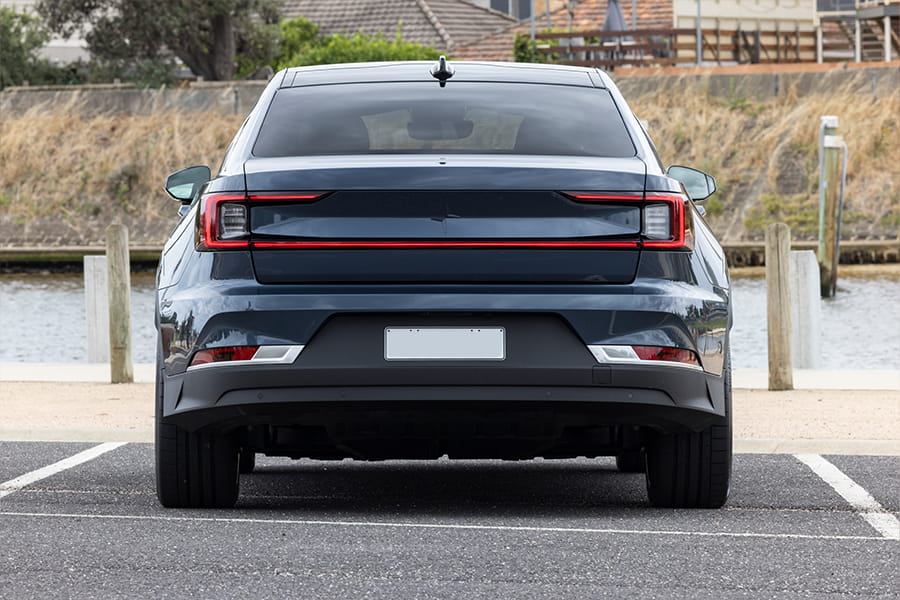
There are a number of factors working in the Polestar’s favour. The first is that it carries the majority of that weight down low, helping its centre of gravity; the second is that it wears grippy Continental SportContact6 tyres; and finally, there are those optional Ohlins dampers.
They have been a common inclusion on Polestar-branded Volvo products up until now but they’re arguably even more incongruous in the 2.
Not because they don’t work. In fact, they work brilliantly, controlling the 2’s mass and providing immediate feedback from the road underneath and brilliant body control – the harder the hit, the smoother the reaction.
The trade-off is a firm ride around town, which might not be too bad for a performance-focused driver but passengers might find it a little too harsh and tiring. The dampers are adjustable and can be softened but it’s a manual job that requires taking wheels off and getting your hands dirty, so it’s difficult to see any owner being curious enough to do so.
Still, the focused ride is excusable when the Polestar 2 has genuine handling talent. The steering is a little slow but the combination of strong (albeit hard-working) brakes, plenty of grip and fantastic all-wheel drive traction makes the dual-motor 2 extremely quick on a twisty road.
It is actually quick enough to give most hot hatch drivers a surprise, at the very least. Just don’t expect to get anywhere near that 480km claimed range if you dip into the performance regularly.
Work still to be done
There is a lot to like about the 2022 Polestar 2 Long Range Dual Motor. It looks great, inside and out, the Google infotainment is truly excellent, it’s sufficiently practical, easy to drive at a leisurely pace, enjoyable to drive fast and, with those option boxes ticked, has all the kit you’d expect.
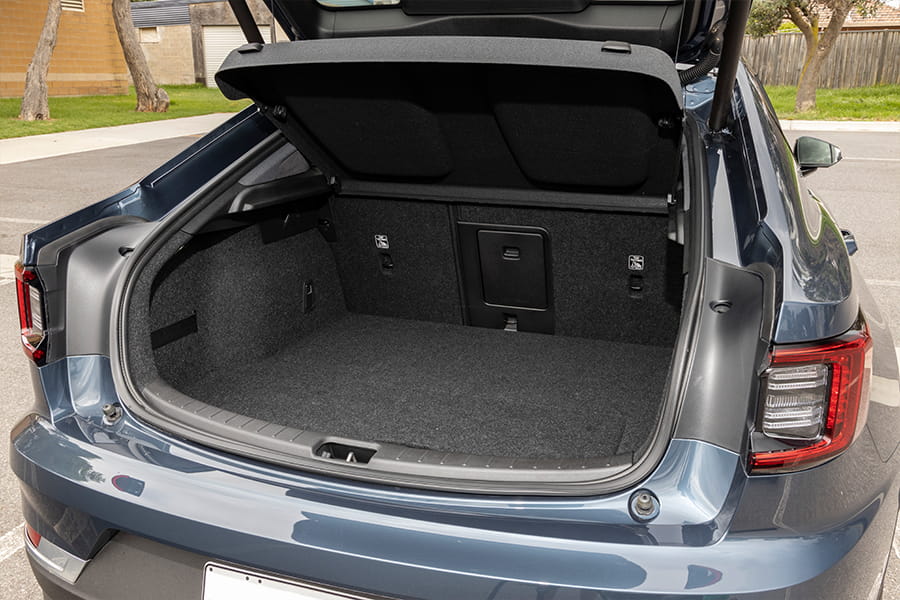
It would be nice if some of that equipment was standard – in particular on the safety side – but, equally, the fully-loaded 2 wears its near-$90K price tag quite well.
This only makes it more unfortunate that the Polestar trips up on some of the details.
Its throttle and brake response could use some refining and the firm ride is at odds with the way these cars will be driven most of the time. The built-from-scratch Kia EV6 showcases the Polestar’s shortcomings.
Nevertheless, don’t dismiss the Polestar 2. While it’s not quite a home run, it’s still a very easy car to like and one that’s enjoyable to both drive and be in.
As such, it’s a welcome addition to Australia’s EV club.
How much does the 2022 Polestar 2 Long Range Dual Motor cost?
| Price: $73,200 plus ORCs ($90,200 plus ORCs as tested) |
Battery: 78kWh lithium-ion |
| Available: Now |
Range: 480km (WLTP) |
| Powertrain: Two asynchronous electric motors |
Energy consumption: 19.4kWh/100km (WLTP) |
| Output: 350kW/680Nm |
Safety rating: Five-star (ANCAP 2022) |
| Transmission: Single-speed reduction gear |
Disclaimer: Images supplied by carsales.
This article was prepared by an independent author. The information contained in this article represents the views and opinions of the original author, and is based on research carried out by the original author. The appearance of the article on Maxxia's website does not constitute an endorsement of its content by Maxxia in any way. The article has been made available for informational purposes only and should not be taken as advice. While all reasonable care has been taken to ensure that the statements made by the original author in the article are fair and accurate, Maxxia does not guarantee or warrant the accuracy or completeness of this information and will not be liable for, or in connection with, any loss or damage suffered as a result of any inaccuracies, errors or omissions or your reliance on this information. You should independently research and verify information before making any decision in respect of a vehicle.



